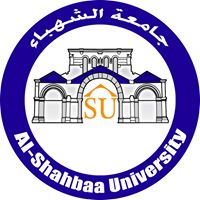اشترك بالحزمة الذهبية واحصل على وصول غير محدود شمرا أكاديميا
تسجيل مستخدم جديدUltracold Molecular Assembly
348
0
0.0
(
0
)
اسأل ChatGPT حول البحث

ﻻ يوجد ملخص باللغة العربية
Chemical reactions can be surprisingly efficient at ultracold temperatures ( < 1mK) due to the wave nature of atoms and molecules. The study of reactions in the ultracold regime is a new research frontier enabled by cooling and trapping techniques developed in atomic and molecular physics. In addition, ultracold molecular gases that offer diverse molecular internal states and large electric dipolar interactions are sought after for studies of strongly interacting many-body quantum physics. Here we propose a new approach for producing ultracold molecules in the absolute internal and motional quantum ground state, where single molecules are assembled one by one from individual atoms. The scheme involves laser cooling, optical trapping, Raman sideband cooling, and coherent molecular state transfer. As a crucial initial step, we demonstrate quantum control of constituent atoms, including 3D ground-state cooling of a single Cs atom, in a simple apparatus. As laser technology advances to shorter wavelengths, additional atoms will be amenable to laser-cooling, allowing more diverse, and eventually more complex, molecules to be assembled with full quantum control.
قيم البحث
اقرأ أيضاً
We demonstrate full quantum state control of two species of single atoms using optical tweezers and assemble the atoms into a molecule. Our demonstration includes 3D ground-state cooling of a single atom (Cs) in an optical tweezer, transport by sever
al microns with minimal heating, and merging with a single Na atom. Subsequently, both atoms occupy the simultaneous motional ground state with 61(4)% probability. This realizes a sample of exactly two co-trapped atoms near the phase-space-density limit of one, and allows for efficient stimulated-Raman transfer of a pair of atoms into a molecular bound state of the triplet electronic ground potential $a^3Sigma^+$. The results are key steps toward coherent creation of single ultracold molecules, for future exploration of quantum simulation and quantum information processing.
We perform photoassociation spectroscopy in an ultracold $^{23}$Na-$^6$Li mixture to study the $c^3Sigma^+$ excited triplet molecular potential. We observe 50 vibrational states and their substructure to an accuracy of 20 MHz, and provide line streng
th data from photoassociation loss measurements. An analysis of the vibrational line positions using near-dissociation expansions and a full potential fit is presented. This is the first observation of the $c^3Sigma^+$ potential, as well as photoassociation in the NaLi system.
Controlling the pathways and outcomes of reactions is a broadly pursued goal in chemistry. In gas phase reactions, this is typically achieved by manipulating the properties of the reactants, including their translational energy, orientation, and inte
rnal quantum state. In contrast, here we influence the pathway of a reaction via its intermediate complex, which is generally too short-lived to be affected by external processes. In particular, the ultracold preparation of potassium-rubidium (KRb) reactants leads to a long-lived intermediate complex (K$_2$Rb$_2^*$), which allows us to steer the reaction away from its nominal ground-state pathway onto a newly identified excited-state pathway using a laser source at 1064 nm, a wavelength commonly used to confine ultracold molecules. Furthermore, by monitoring the change in the complex population after the sudden removal of the excitation light, we directly measure the lifetime of the complex to be $360 pm 30$ ns, in agreement with our calculations based on the Rice-Ramsperger-Kassel-Marcus (RRKM) statistical theory. Our results shed light on the origin of the two-body loss widely observed in ultracold molecule experiments. Additionally, the long complex lifetime, coupled with the observed photo-excitation pathway, opens up the possibility to spectroscopically probe the structure of the complex with high resolution, thus elucidating the reaction dynamics.
Femtochemistry techniques have been instrumental in accessing the short time scales necessary to probe transient intermediates in chemical reactions. Here we take the contrasting approach of prolonging the lifetime of an intermediate by preparing rea
ctant molecules in their lowest ro-vibronic quantum state at ultralow temperatures, thereby drastically reducing the number of exit channels accessible upon their mutual collision. Using ionization spectroscopy and velocity-map imaging of a trapped gas of potassium-rubidium molecules at a temperature of 500~nK, we directly observe reactants, intermediates, and products of the reaction $^{40}$K$^{87}$Rb + $^{40}$K$^{87}$Rb $rightarrow$ K$_2$Rb$^*_2$ $rightarrow$ K$_2$ + Rb$_2$. Beyond observation of a long-lived energy-rich intermediate complex, this technique opens the door to further studies of quantum-state resolved reaction dynamics in the ultracold regime.
We investigate collisional loss in an ultracold mixture of $^{40}$K$^{87}$Rb molecules and $^{87}$Rb atoms, where chemical reactions between the two species are energetically forbidden. Through direct detection of the KRb$_{2}^{*}$ intermediate compl
exes formed from atom-molecule collisions, we show that a $1064$ nm laser source used for optical trapping of the sample can efficiently deplete the complex population via photo-excitation, an effect which can explain the universal two-body loss observed in the mixture. By monitoring the time-evolution of the KRb$_{2}^{*}$ population after a sudden reduction in the $1064$ nm laser intensity, we measure the lifetime of the complex ($0.39(6)$ ms), as well as the photo-excitation rate for $1064$ nm light ($0.50(3)$ $mu$s$^{-1}($kW/cm$^{2})^{-1}$). The observed lifetime is ${sim}10^{5}$ times longer than recent estimates based on the Rice-Ramsperger-Kassel-Marcus statistical theory, which calls for new insight to explain such a dramatic discrepancy.
سجل دخول لتتمكن من نشر تعليقات
التعليقات
جاري جلب التعليقات


سجل دخول لتتمكن من متابعة معايير البحث التي قمت باختيارها


